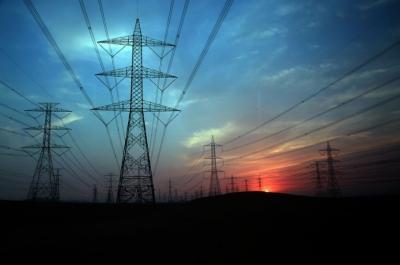Sensitivity of Western U.S. Power System Dynamics to Droughts Compounded with Fuel Price Variability
Power system operations are usually evaluated through system reliability and economic perspectives, with assumptions based on average market prices and normal water availability. However, fuel price volatility and changes in water availability can greatly affect localized and inter-regional electricity generation, oftentimes in myriad, complex ways. It is uncertain how the power sector will respond to the combination of variable water availability and natural gas price fluctuations, particularly in the drought-stressed western United States. Researchers at the U.S. Department of Energy’s National Renewable Energy Laboratory and Pacific Northwest National Laboratory evaluated the effects of water availability and fuel price changes simultaneously by coupling a water management model with a power system model. They simulated how western U.S. electricity generation and production costs responded to 20 scenarios representing different combinations of averages and extremes of water availability and natural gas prices. Researchers analyzed results at the scale of the Western Electricity Coordinating Council (WECC), which represents the electric grid in the western continental United States, as well as over six major subregions. The analysis revealed that variations in water availability could have the same magnitude of impact on regional electricity production costs as natural gas price volatility.
This research sheds light on the tradeoffs, tipping points, and overall dynamics of water-related stresses compounded with stresses related to fuel price volatility for the western U.S. power grid. The study also shows that regional responses to simultaneous stresses can augment or offset the impacts of stresses analyzed in isolation. This analysis motivates further research in combined hydrology and power system modeling to characterize regional dynamics and associated uncertainties across scales—an important underpinning for the development of more resilient energy and water systems.
As natural gas technologies continue to dominate new thermal capacity, natural gas price stability becomes increasingly important. The impact of price volatility on grid operations must be understood, importantly in the context of other key stress drivers on the power system, including changes resulting from variable water availability. Specific regions, such as the western United States, might face compounding vulnerabilities and impacts.
Researchers explored the range of WECC regional power operations under varying fuel prices and water availability. They produced 55 years of historical hydrology and power system simulations by coupling the VIC-MOSART-WM water management model with the PLEXOS electricity production cost model, which is driven by different fuel prices, water availability, and regional loads. The simulations helped the research team identify a range of water availability cases that led to varying amounts of hydropower generation and water-induced thermoelectric curtailments. The team analyzed the power system impacts and regional differences of these hydrological conditions in isolation as well as in combination with four separate natural gas price scenarios to capture historical and future price volatility. Results showed system-wide operation costs increasing in drought years or when gas prices increased, as expected. In addition, researchers found that those system-wide increases could be of the same magnitude. Analysis of the sub-regional responses highlighted differences in magnitude and direction (increase or decrease) depending on regional generation technology portfolios. The Pacific Northwest, which relies mostly on hydropower, was most sensitive to drought conditions. Southern California (primarily natural gas and renewables) was most sensitive to gas prices. The Desert Southwest (primarily coal with increasing amounts of natural gas) was sensitive to drought conditions and gas prices with the same magnitude.

